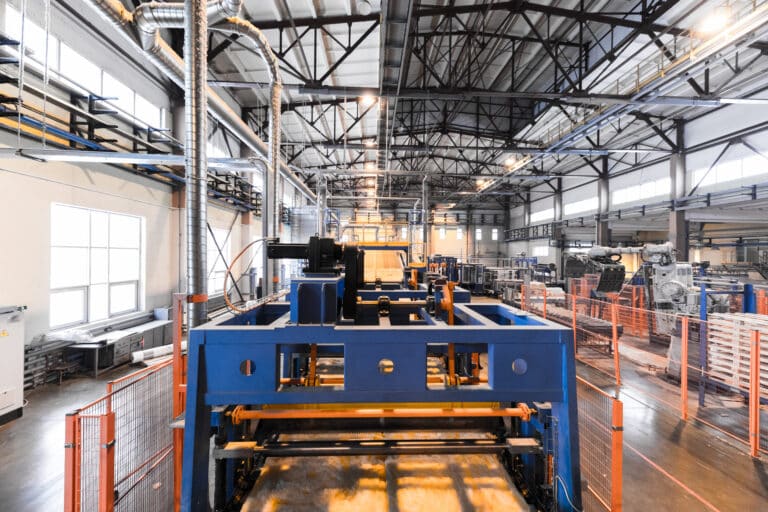Machined screws, bolts, and fittings rely on quality precision threading to join parts seamlessly. Yet the meticulous process of accurately slicing tiny helical grooves often proves daunting, particularly for newcomers unfamiliar with the methodology and specialized tooling involved.
Therefore, we have created this comprehensive guide that instills all the need-to-know fundamentals, from essential theory to techniques for expertly cutting external threads by hand or machine.
Grasping thread theory
Just as wood screws bore their way into solid boards, externally threaded metal components like round rods must first displace material as their sharp linear teeth carve helical progressions into a workpiece when twisted clockwise under tension.
Drills make round holes in the middle of materials. However, thread-cutting tools slice perfectly shaped grooves curved to match the exterior part surfaces. The cutters have uniquely angled teeth designed to optimally cut threads in certain metals. Let’s look at how the teeth shave off material as they spin to form these identical contoured channels.
Taps and dies
Two indispensable implements cut external screw threads – taps and dies. We’ll distinguish their distinct purposes.
Pipe taps
Pipe taps consist of hardened cylindrical tool steel bars ranging from 1/16″ to 2″ diameters featuring precisely ground external helical teeth progressing toward the chucked end. Attached to the rotating spindle of a manual tap wrench, bench press, or drill press, controlled axial pressure while turning cuts matching female thread patterns into pre-drilled holes.
Circular dies
Circular split dies, usually made of heat-treated steel, contain three adjustable pie-shaped wedges forming a ring with internal cutting ridges when closed and locked. By gripping rod stock inserted through centered gaps and carefully turning the die manually or powering the die head clockwise, external male threading gets carved into rods, pipes, or bars by compressing and shearing action.
Understanding thread-cutting methods
Before striking steel, choose between two predominant material removal methods – each powered by machines with vastly different mechanical properties.
Shearing thread cutting
Shearing relies on genuine cutting edges, literally slicing slivers of metal off a blank by penetrating just beneath the surface, then laterally skiving upwards at an angle matching the thread’s winding path as it turns. Dies primarily employ this technique. It demands extreme blade sharpness and durable construction for shearing forces involved but finishes faster than compression rolling methods with crisply defined peaks and valleys.
Compressing thread rolling
In thread rolling operations, round dies made of case-hardened steel squeeze external threads into softer rods by displaced cold flow without cutting anything. Compressive stress below ultimate tensile limits rolls the blank smoothly, using up to 100 times less energy and generating minimal heat. Lead screws and oil sumps integrate this technique but depend wholly on sufficient metal flexibility to avoid cracking during extreme contour change.
Manual versus machine precision
Basic handheld tap wrenches or arbor press threading lets users control pressure finesse and feel. However, volume production applications demand automated precision, where specialized machines adjust chuck speeds and feed rates to optimize quality. We’ll compare methods.
Thread cutting fundamentals
Mastering a few foundational facets elevates outcomes from crude improvising to refined practice.
Methodical rhythm
Consistent turning pace and measured axial force set rhythm. Rapid accelerating/plunging overstresses tools. Find balance through controlled feed rates.
Synchronous cooling
Frequent lubrication along cut length avoids overheating tools/material while flushing chips for cleaner female peaks or male roots and cutting fluid compatibility matters.
Establishing helical harmony
The angular difference between internal and external threading is vital for snug fits, given the 60° included angle between thread walls. Cut external threads slightly larger in crest diameter so mating ends compress tightly with zero play once assembled from opposite axis offsets.
Chamfer easing
The beveling thread starts at 30° angles and guides alignment, preventing stubbing across non-tapered square ends. It is especially useful on hand taps and form taps for blind holes.
Finessing finishes
The terminating process impacts defects like burrs which snag fittings and provoke leaks. Choose best practice finishes for connections.
Common threaded fittings and sizes
Standardization ensures dimensional interchangeability across manufacturing sectors when replacing hardware. Review usual items:
Standard bolts and screws – 1⁄4″ -20, 3/8″ -16, etc. up to 1″
UNF/UNC specifications – Unified Fine/Coarse threads
BSP fittings – British Standard Pipe threads
NPT fittings – North American Tapered Pipe threads
Summary
This article covers precision theory with practical tactics to cover your knowledge gaps quickly. Memorize must-know nuggets:
- Taps and dies cut thread forms via turning motion
- Binding results from mismatching internal/external angles
- Shearing slices material while rolling displaces it
- Chamfered starts ease alignment
- Synchronized coolant flushing optimizes
- A steady, controlled pace eliminates defects
- Fractional labels define dimensions
- Standardization ensures that the hardware interface
You’re now equipped with competencies separating average improvisers from expert thread-cutting craftsmen. Mastering fundamental best practices while applying troubleshooting awareness empowers perfectly machining screws and fittings critical for mechanical functioning.












